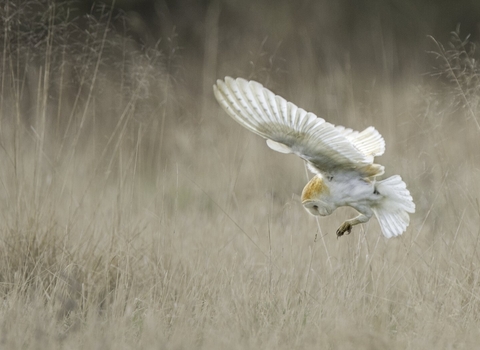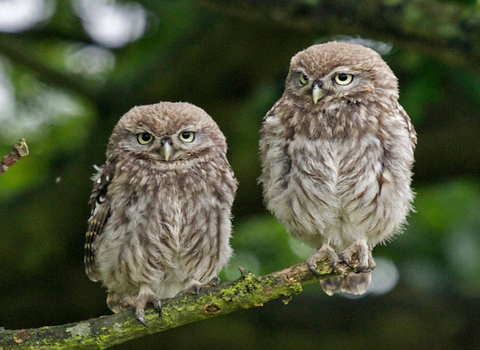Owls are magnificent! Their love of hunting at dawn, dusk and even in the dark gives them a sense of mystery. With a good view, it's easy to tell an owl from any other bird of prey thanks to their large head with big, forward-facing eyes. But how do you tell one owl from another? Here’s our guide to the five species you’re likely to spot in the UK!
Barn owl
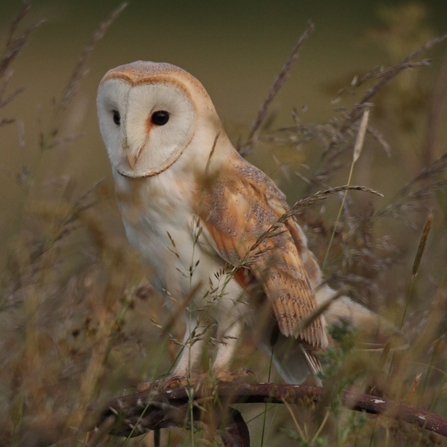
Barn owl © Russell Savory
Barn owls are very pale and slender. They are typically white underneath and golden-brown with grey markings on top. They have white, heart-shaped faces with dark eyes. This, and their pale plumage (feathers), separate them from any other owl. They can usually be seen over grassland or farmland.
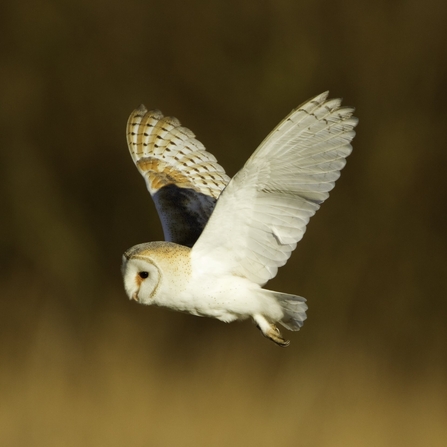
Barn owl © Danny Green/2020VISION
In flight, they often look like large white birds and are mostly seen at dawn and dusk, though they can be seen at night or even hunting during the day.
Tawny owl
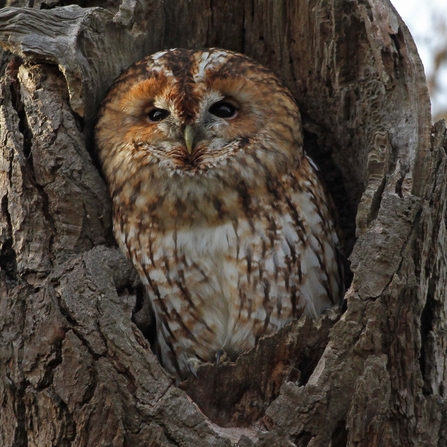
Tawny owl © Margaret Holland
Tawny owls are often a mottled brown, but sometimes they are a greyish or even a reddish brown. They are a little larger than barn owls and are usually seen in woodland. They have large round heads, and their faces are mostly plain, with a narrow, darker wedge extending down between their black eyes.
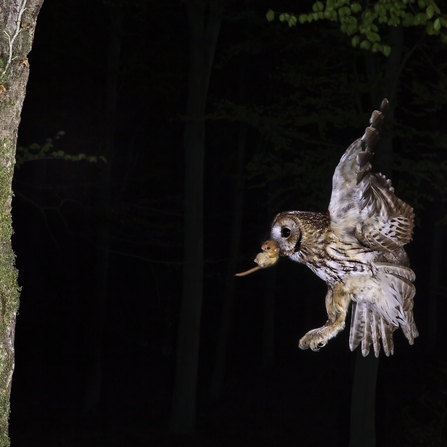
Tawny owl bringing back dormouse to nest © Dale Sutton/2020VISION
They have broad, rounded wings which are usually used for flying short distances only, like from tree to tree. Tawny owls prefer to hunt from perches, swooping down to prey on the ground. You may have trouble spotting this species as they are largely nocturnal and rarely seen flying during the day.
Short-eared owl
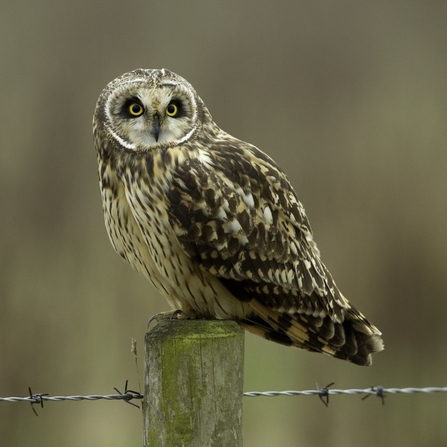
Short-eared owl © Ben Hall/2020VISION
Short-eared owls are a similar size to tawny owls, but with longer wings. They are mostly yellowish-brown in colour, with some darker streaks, and their faces are either pale white or yellowish-brown, with a bold border. Their eyes are very intense as they are a piercing yellow surrounding by dark patches. They look like they’re wearing a lot of black eyeshadow! Short-eared owls also have short ‘ear-tufts’ on top of the head, but you can’t usually see them.
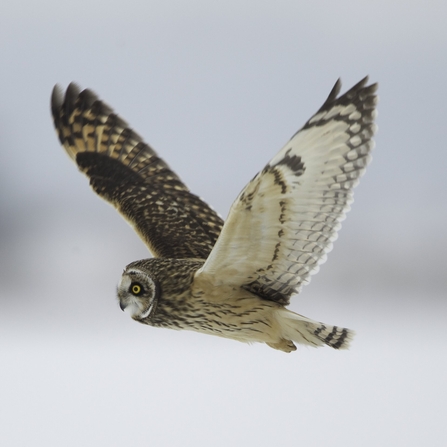
Short-eared owl © Danny Green/2020VISION
Their wings are long and narrow with solid black wingtips – as if they have been dipped in ink. They beat their wings slowly when they fly, gliding from point A to point B. You might be able to spot one of these owls during day or night, as they have been known to hunt around the clock!
Long-eared owl
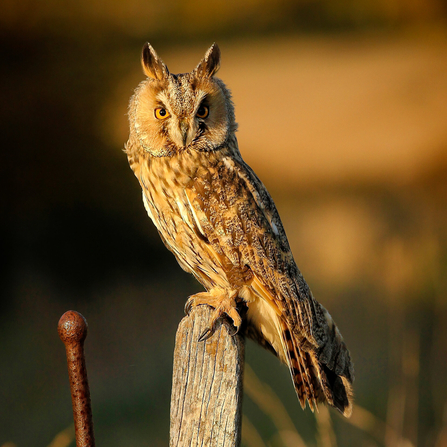
Long-eared owl © Jon Hawkins - Surrey Hills Photography
Long-eared owls are streaky brown owls that look very similar to short-eared owls, but with darker feathers. Their faces have a thick blackish border, with white ‘eyebrows’ which go down towards their beak. These owls have deep orange eyes that have a little bit of black around the inner edge. Their “ear-tufts” are long and obvious on the top of their head, but sometimes they lower them so the tufts can’t be seen as clearly.
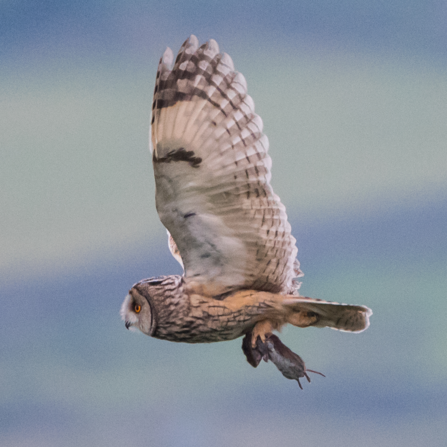
Long-eared owl with field vole prey © Tim Melling
When long-eared owls are flying, it’s really tricky to spot the difference between them and short-eared owls. One difference is their slightly shorter and more blunt wings, and they also don’t have any white at the edge of their upper wing like short-eared owls do.
Long-eared owls normally hunt at night, making them nocturnal hunters. However, they have been spotted in the day before, so seeing an ‘eared’ owl hunting in daylight hours doesn’t automatically make it a short-eared owl.
Little owl
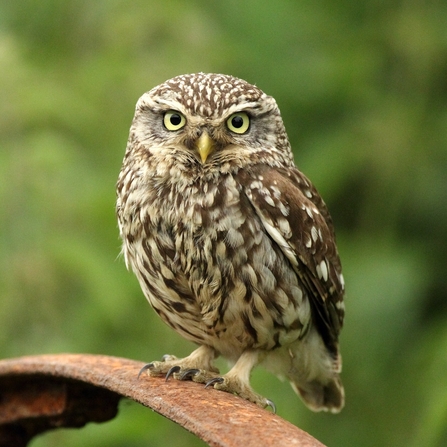
Little owl © Luke Massey/2020VISION
Like the name suggests, little owls are small, and the top of their head is quite flat. Their upperparts are dark brown with whitish streaks and spots, which are large on the back but small on the head. These whitish markings actually look like a false face on the back of the head…creepy! Their chests and stomachs are whitish with bold brown streaks and their faces are greyish brown with big whitish ‘eyebrows’ which make them look very stern.
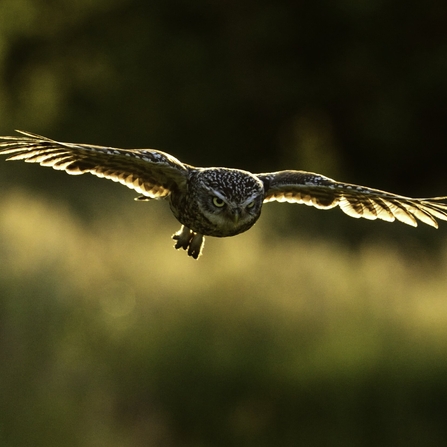
Little owl © Andy Rouse/2020VISION
Little owls can fly fast and although they often hunt by swooping down from a perch, from time to time they will also run across the ground when chasing prey. They can be seen during the day, but they are most active at dawn and dusk.
Unexpected owls
The five owls above are all residents in the UK, but occasionally other species might be spotted. Some, like Tengmalm's, hawk, and scops owls are rare visitors from Scandinavia or continental Europe. Snowy owls and Eurasian eagle owls are recorded slightly more often, but you'd still need to be incredibly lucky to see one!
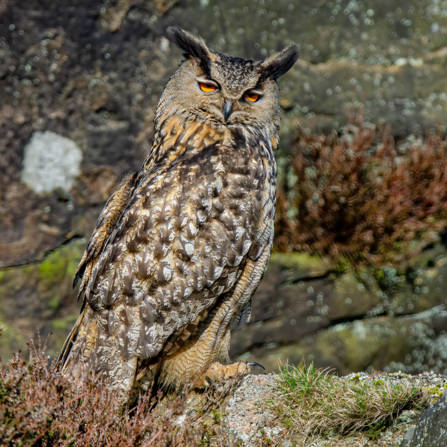
Eagle owl © Pete Richman
Eurasian eagle owl
Eagle owls are Europe's largest owl, growing to around 70cm tall with a wingspan of over 170cm! They have large, dark ear tufts, whitish eyebrows, and orange-red eyes. Eagle owls are commonly kept in captivity, but they have been known to escape. There are even a few records of nesting eagle owls in the UK which are believed to involve escapee birds!
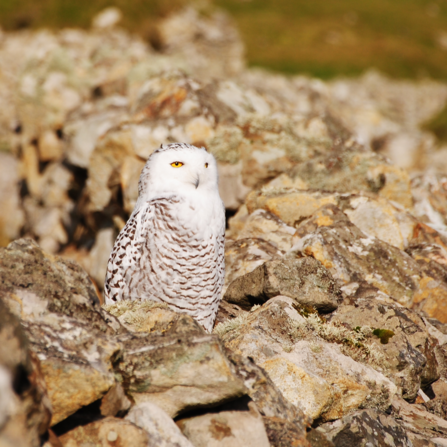
Snowy owl (female) © Sarah Lawrence
Snowy owl
Snowy owls are rare visitors from the north, although they have previously bred in Shetland. Snowy owls are large, white and have yellow eyes. Adult males are almost completely white, whilst females and young birds have dark barring. They are most likely to be found in winter, in the Scottish Highlands or islands.

